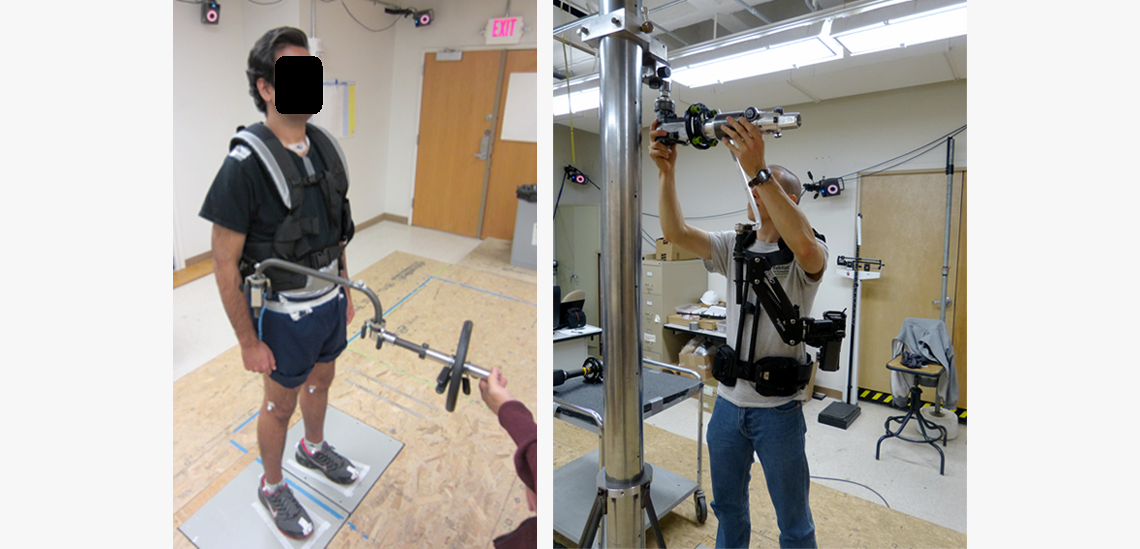Ergonomic Research on Manufacturing Tasks
Participants wearing a wearable assistive device during the experiment

Goals & Objectives
To determine whether and to what extent the use of a wearable assistive device (AD) can reduce operator physical stress compared to manual work, particularly during overhead tasks, and whether such reductions are dependent on specific postures, payloads, and/or work conditions.
Project Approach & Activities
Two experiments were completed. The first assessed tolerance to low back loads while individuals are wearing the AD. This device was intended for use when task required elevated arm postures, specifically to “offload” the shoulder muscles. Since upper-extremity loads were transferred largely to the low back, as external moments, it was of interest to determine whether such low back loads would be tolerable, and over what range. Secondary goals were to:
- determine if this tolerance differs between AD designs (i.e., rigid front vs. rigid back)
- assess the effects of wearing the AD on postural control
- obtain preliminary usability results regarding the AD.
In the second experiment, participants performed simulated overhead work using several “payloads”, and did so with and without the AD. Outcome measures included perceived discomfort, joint moments, and muscle activity.
Faculty and Facility
PI: Maury A. Nussbaum, Ph.D.; Co-Investigators: Michael J. Agnew, Ph.D. and Sunwook Kim, Ph.D.
Student Researchers
Ehsan Rashedi, Khoirul Muslim, Nima Toosizadeh
Funding Source
“Ergonomic Research on Manufacturing Tasks”, Equipois, Inc. (06/11/12 – 05/31/13) PI: M.A. Nussbaum, Co-I: M.J. Agnew.
Sector: Manufacturing
Discipline: Musculoskeletal Disorders
PI: Maury Nussbaum (Virginia Tech)
Co-I: Michael Agnew (Virginia Tech)


